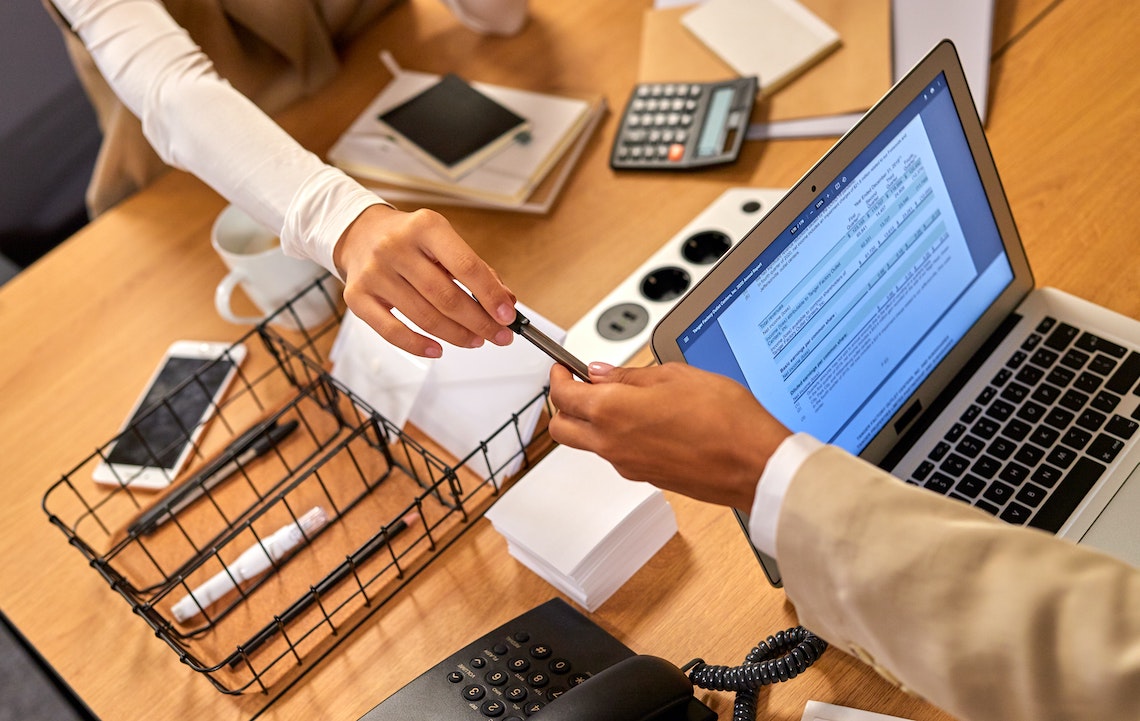Although the words are used interchangeably more often than not, procurement and purchasing are not synonymous. First, let’s take a look at their definitions:
Procurement: The act of obtaining or buying goods and services. The process includes preparation and processing of a demand as well as the end receipt and approval of payment. (Source: BusinessDictionary)
Purchasing: The activity of acquiring goods or services to accomplish the goals of an organization. (Source: BusinessDictionary)
Purchasing is Part of the Procurement Process
Purchasing is actually just a subset of procurement. Procurement includes purchase planning,
standards determination, specifications development, supplier research and selection, value analysis, financing, price negotiation, making the purchase, supply contract administration, inventory control and stores, and disposals and other related functions.
Purchasing refers simply to buying goods or services. Purchasing often includes receiving and payment as well. The steps specifically related to purchasing cycle are:
- The Need. The need for the purchase should be tightly defined and specified.
- Financial Authority. This step usually includes management of the department that requires the goods.
- RFP. A Request For Proposal (RFP) is written that goes into the details of the need.
- Invite Tenders. This is a formal process that often includes posting the request in trade magazines and appropriate websites or on government websites for a government project.
- PQQ. A Pre Qualification Questionnaire (PQQ) is sent out to a short list of appropriate suppliers.
- Tenders. The tenders are sent in from the qualified suppliers.
- Qualifying. Qualifying meetings are held to clarify any questions.
- Evaluation. All the tenders are evaluated and the requirement awarded to the winning bidder.
- Negotiation. The fine print of the terms and conditions are negotiated with the chosen supplier.
- Contract Award. The contract is awarded to the chosen bidder.
- Manage Contract. This is the period in the purchasing cycle when the goods are delivered.
- Approval and Payment. If the contract is carried out completely then full payment is made.
- Sign Off. At the end of the contract work and deliveries, the contract is signed off and all relationships with the supplier are finished.
- Update Of Records. The purchasing ledger and stock records are updated.
Strategy is the Differentiator
Procurement requires a high level of knowledge and experience to implement effectively. Because of this, it really should be considered a core part of any business’s corporate strategy.
An effective procurement strategy should include the following seven steps:
- Conduct an internal needs analysis. You will need to benchmark current performance and identify where you would like your procurement strategy to improve. This process includes collecting several different types of data. Read our blog Tips to Understand Procurement Spend for more details.
- Conduct an assessment of the supplier’s market. The procurement team should research the market and identify potential locations and vendors that are feasible sources of the required raw materials, components, finished goods, or services.
- Collect supplier information. This step in the process should be taken very seriously because a supplier’s inability to meet selection criteria can result in significant losses for the organization. The procurement team should do a thorough evaluation of each supplier before making selections.
- Develop a sourcing/outsourcing strategy. Based on the information previous steps, the procurement team should develop a sourcing/outsourcing strategy. This will be dependent on the competitiveness of the supplier marketplace and the sourcing/outsourcing organization’s risk tolerance, overall business strategy, and motivation for outsourcing.
- Implement the sourcing strategy. Sourcing strategies that involve acquisition or strategic partnerships are major undertakings. For a direct purchase, organizations may begin with an Expression of Interest, solicit bids from identified potential suppliers as part of a bidding process.
- Negotiate with suppliers and select the winning bid. The procurement team must evaluate responses from suppliers and apply previously-developed evaluation criteria. From there, they will enter contract negotiations with the bidders.
- Implement a transition plan or contractual supply chain improvements. When switching suppliers, it’s important that your procurement team creates a strong transition plan and develops Key Performance Indicators that the new supplier is expected to meet. This will help your team measure their success.
Procurement and Purchasing Are Both Valuable
Because purchasing is a process within procurement, the terms are often used interchangeably. It’s important for business executives to be knowledgeable of the difference between the two and the value of having a procurement strategy.
Don’t have a procurement strategy? Reach out to us!

